Kneip creates miniature motorised sculptures from found objects
Vienna Design Week 2015: a hammer that persistently strikes a stone and a "breathing" vacuum-packed sponge are among the moving sculptures that Norwegian studio Kneip has installed at a Viennese workshop (+ movie).
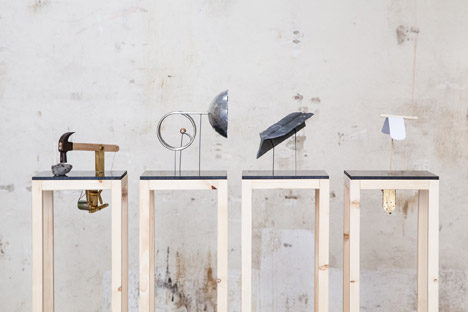
Objects of Curiosity was designed as part of Vienna Design Week's Passionswege programme, for which local and international designers are paired with a Viennese production company to create objects or installations.
Oslo-based Kneip, which has previously designed a series of sculptural atmospheric sensors, was teamed with water-jet cutting firm PEGA-cut Schneidetechnik.
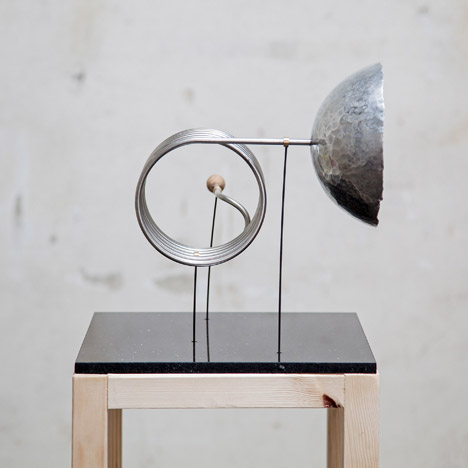
The company's machines cut stone, metal, wood and ceramic into any two-dimensional form.
The studio's founders Jorgen Platou Willumsen and Stian Korntved Ruud used materials found in the workshop and additional elements cut with the machines to produce nine "experiments". Each includes movement, sound, motors or magnets in various ways and combinations.
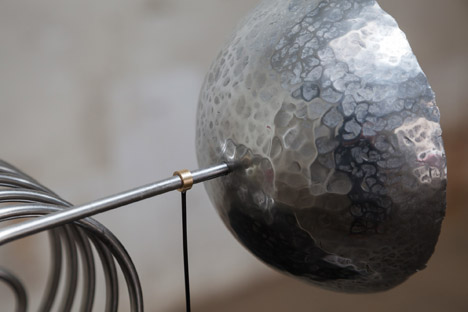
"The mechanical structures are inspired by the industrial way of working," Ruud told Dezeen.
Their project is based on a Wunderkammer, or curiosity cabinet, and the range of different small objects that are often found inside.
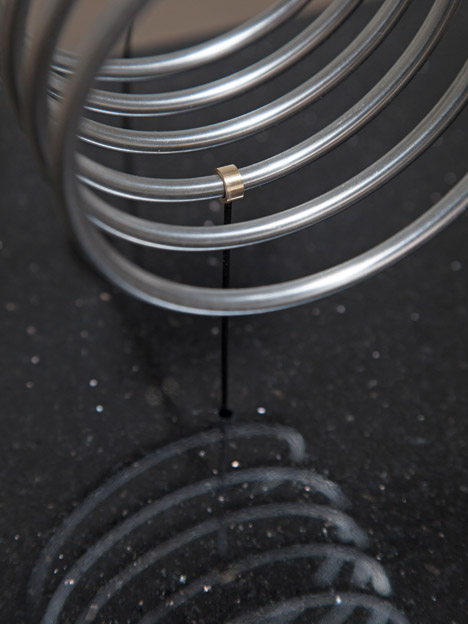
Some of the pieces use an Arduino open-source electronics platform to control the perpetual motion of the motors, which are employed to power items like a hammer that continuously strikes a stone.
The motor rotates a stick that lifts the end of the tool up and drops it onto the rock, then repeats the action.
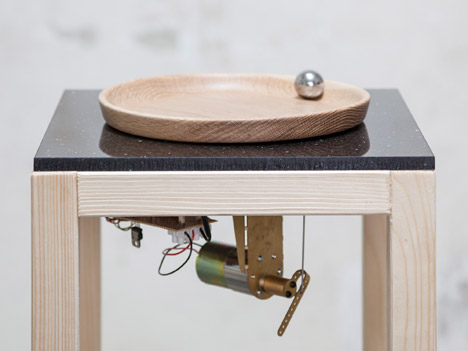
"The nice thing is that the stone is not too hard, so as it hammers it creates dust and shavings," Ruud said.
Another piece comprises a plastic bag that covers a cube of foam. A tube inserted into the bag slowly sucks out the air, forming a vacuum that compresses the foam. When the suction is released, the foam returns to normal shape – resulting in a cycle that makes the object appear to breathe.
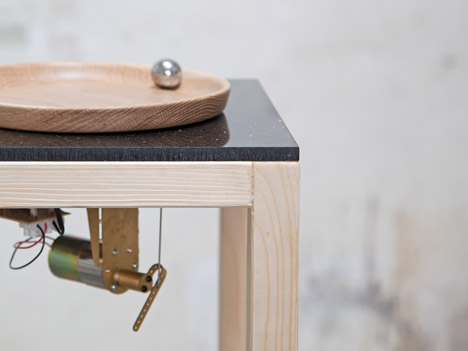
A ball forever spinning around the edge of a wooden plate is controlled by a magnet beneath, attached using a metal tube from one of Gabriel's machines.
"It was fun to use his spare parts in a way that they hadn't been used before," said Ruud. "We often work with materials we find, in the trash or in the forest."
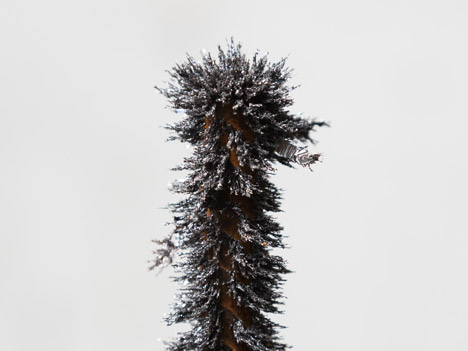
Waste sand from the water-jet cutting process is mixed with metal powder and moved around on a disc, also using a magnet underneath to produce patterns on the surface.
"It was another nice way to create an object from the leftovers of the workshop," said Ruud.
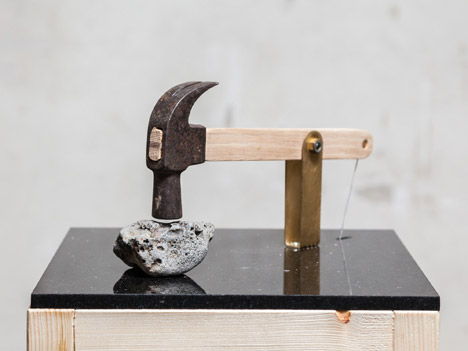
The collection also includes a static sculpture shaped like a paper aeroplane but made from lead, and a cone of paper placed on the end of a spike that is rotated and undulated by a fan positioned underneath.
Each piece is mounted on a wooden frame with open sides, so visitors can peer underneath to see how it works.
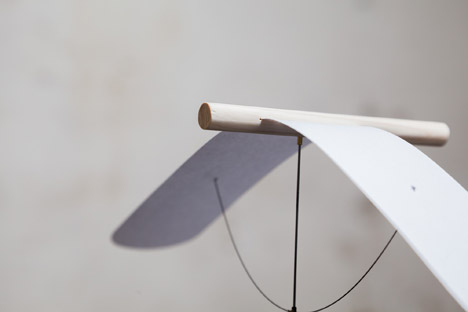
They are arranged as a three-by-three grid in an empty room at PEGA-cut Schneidetechnik's headquarters in the Favoriten area of Vienna – the focus district for this year's design week.
Vienna Design Week 2015 runs from 25 September to 4 October in the Austrian capital. Projects shown at last year's edition of the annual festival included a punched music card box that played strips of folk embroidery patterns and a range of cakes for one of Vienna's most famous coffee houses.